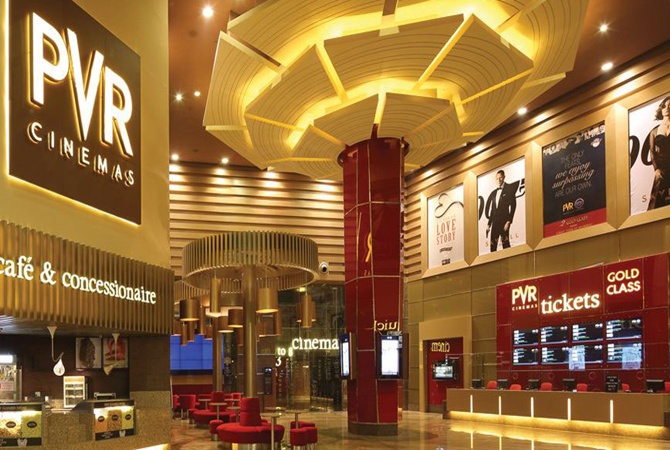Movie theatres may reopen around the second week of July.
The next time you walk into a cinema hall, be prepared to find an empty seat adjacent to you.
India’s movie-going experience has been permanently altered by the COVID-19 pandemic and what will now greet patrons is a far more ‘sanitised’ environment at theatres, away from the milling crowds, who were happy holding hands or having popcorn and cola before the lockdown.
As Unlock 1.0 sets the ball rolling for theatres, single-screen and multiplex, to reopen in its third phase, which is estimated to be around the second week of July, seat distancing, contact-less service and rigorous hygiene will be the order of the day.
Moviegoers will be encouraged to pre-book their tickets and meals, wear masks when watching films and maintain strict lane discipline while entering and exiting movie halls.
Housekeeping will acquire disproportionate importance and staff will be checked from time-to-time to ensure they have no health concerns.
The country’s top multiplex chains, including names such as PVR, Inox, Cinepolis and Carnival Cinemas, have been quietly at work on these new standard operating procedures, undertaking digital seminars and training programmes for their personnel, cleaning up their properties to prevent damage from humidity and procuring the technology to aid in sanitisation and thermal screening.
Single-screen theatres, on the other hand, have been struggling to get started, given that cash flows have been nil for the past two-and-a-half months since the lockdown began.
Of the 9,600 screens in India, 70 per cent are single screens and 30 per cent are multiplex screens.
However, multiplexes earn more than half of India’s theatrical revenues, implying many single-screen theatres could simply fold up under the combined weight of high maintenance costs and low footfalls, say experts.
Industry estimates are that maintenance costs of movie halls could shoot up by 20 to 25 per cent in the post-COVID world though multiplexes could compensate for it by cutting headcount within properties as operations increasingly get digitised to minimise contact.
Occupancy levels, which before the COVID-19 crisis stood at 35 to 36 per cent on an average for multiplexes, could settle at levels of 25 to 30 per cent after the initial three to six months lapse after reopening and patrons adjust to the new normal.;
Gautam Dutta, chief executive officer, PVR Cinemas, says his firm has devised detailed protocols, at the cinema, employee and customer levels, which will act as the ‘new rule-book’ once properties reopen.
“There are three things we are doing at the employee level. One is undertaking rigorous training programmes in the pre-opening phase to help staff adapt to the new normal. This will move into dry runs and sprints 5 to 10 days prior to re-opening and the third aspect will be to ensure that staff are medically fit going into reopening,” says Dutta.
“The process of medical checks will continue after reopening for all staffers, since many will be in the frontline of duty,” adds Dutta.
“We are also trying to make it fun for our employees during training sessions, including aspects such as gamification into training modules, so that they can pick up the ropes quickly,” Dutta says.
PVR has also raised the bar with regard to safety standards, installing anti-bacterial films at all high-contact points within its properties, including door handles, knobs and lift buttons to prevent transfer of germs, sterilising moving air to improve indoor air quality in auditoriums and using special packaging and dispensers for food items.
Cash will be disinfected with UV light from time-to-time and motion sensor-based sanitisers will be placed in all washrooms.
Alok Tandon, CEO, Inox Leisure, says his chain will encourage ‘paperless transactions’ for ticket booking and food ordering.
“Distancing protocols will need to be followed right from the entry of the guests, using floor demarcations. To ensure distancing inside the auditorium, we will allot seats in a way that adjacent seats are left vacant after any booking,” says Tandon.
“Additionally, movie shows will be programmed in such a manner, that entry, intermissions and exits to two shows do not occur simultaneously,” he says.
Devang Sampat, CEO, Cinepolis India, says the multiplex chain is evaluating ‘multiple’ arrangements for seating to ensure social distancing.
“Our IT systems are fully geared to provide a range of seating options. We are also ready to implement social distancing norms, which the government authorities may prescribe for the industry,” he says.




